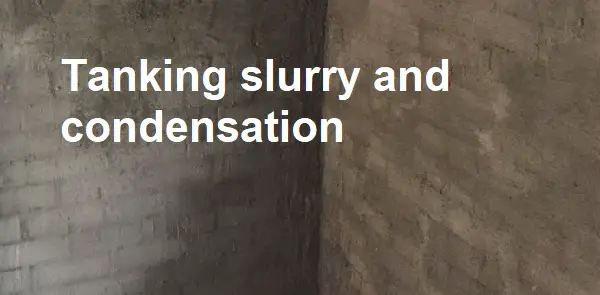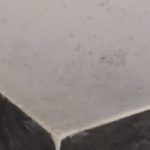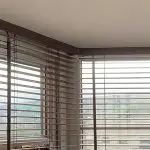The DIY Fix is reader supported. When you buy after clicking a link on our site, we may earn an affiliate commission.
Tanking slurry can be a great product for sealing walls and protecting from things like penetrating damp. However, it does come with its own limitations and potential issues.
Once applied, the slurry forms a completely watertight layer on the surface. As well as this, it also seeps into capillaries, cracks, and pours beneath the surface it is being applied too. When this happens, small crystals form in all these small gaps and make it impossible for water to penetrate.
This is great when it comes to stopping penetrating or rising damp, but it does mean the surface is completely non-breathable.

Because the surface is non breathable, it does not take on water at all. This means water will not penetrate in from outside, and it also can’t soak into the walls surface inside.
Most walls, both inside and out, are usually breathable and porous to some extent. This means small amounts of moisture can soak into the surface and easily evaporate. In most cases, this is completely normal and not an issue. However, tanking slurry will not allow any water to enter. This means that tanking slurry and condensation are a common problem.
Why does tanking slurry attract condensation?
As we already mentioned tanking slurry is completely waterproof. Due to this when moisture settles on its surface, it doesn’t soak in and forms condensation.
This is actually a very common problem and can leave people wondering if this is still damp penetrating from outside. The good news is if you mixed and applied the slurry correctly, then it is very unlikely this moisture is penetrating from outside.
The most common reason that tanking slurry can lead to condensation, is that it creates a dew point that does not soak up any water.
A dew point is a cold surface in your home that attracts warm moist air. When the warm water vapour meets the cold slurry, it condenses on the surface. Because it doesn’t soak in at all, this forms noticeable condensation on the surface.
This is like condensation forming on a window. We have probably all noticed windows covered in condensation in our own homes. This is very common when the weather is cold outside. It happens because there is a large amount of moisture in the air inside your home, and the window surface is much colder. This acts like a magnet to the warm moist air. Cold tanking slurry will act in the same way.
How can you stop condensation on tanking slurry?
There are two main ways that you can stop condensation on your tanking slurry:
- Reduce moisture content in the air
- Increase the temperature of the tanked wall.
Reducing moisture content
When it comes to reducing moisture there are a few simple things that you can do. These include opening windows to allow air to circulate, this will cause warm moist air to be removed and fresh air to enter the space. You can also assist this process, with an internal fan or even an extractor fan.
Another thing you can try to do, is avoid creating a lot of moisture. There are many household tasks that create large amounts of water vapour and contribute to condensation. These include:
- Cooking
- Baths and showers
- Drying clothes indoors
- Etc.
Bodily functions alone, such as breathing and sweating release significant moisture into your home. If you add the above into the mix, it is very easy to end up with very high moisture levels. When you perform any of these household tasks, make sure you are extracting the moisture, rather than leaving it to condense on surfaces in your home.
Use a dehumidifier
One of the simplest ways to extract moisture is with a dehumidifier. They are affordable and effective at removing moisture in your home. Plus, it means you don’t need windows open in the middle of winter.
To learn more about how a dehumidifier can help with condensation click here
Increase the temperature of the tanked surface
Once you have eliminated the excess moisture, you should see a noticeable difference in condensation on your tanking slurry. However, if you want to ensure it doesn’t settle there at all, you will need to increase the surface temperature.
The most common reason for a wall being cold, is that it is an external wall. This means that it is the only barrier between the inside and outside of the property. In this case there are two most common scenarios.
- It is a cavity wall
- It is a solid single skin wall.
If your wall is a cavity wall and it is lacking insulation, then adding insulation will probably be the best solution. This will stop cold penetrating through to the internal surface. If this is done correctly, the wall will become warmer and will no longer act as a dew point.
If you have a solid wall construction, then the solution is slightly less straight forward. Again, insulation is probably your best solution. However, this will need to be installed internally.
One way to achieved this, is with insulated plasterboards, these can be fitted to your wall with timber battens. Obviously, this will eat into the room a couple of inches, but it should stop the condensation. Also, it will help to insulate your property better and it will give a much nicer finish than the tanking slurry.
Another option with insulation board, is to dot and dab. However, you will need to use a non-water based adhesive, because standard dot dab will fail to hold on to the tanking slurry.
Learn more about how to dot dab on tanking slurry here.
Your final option is to build an internal stud wall and add insulation to the studwork. This will have the same effect as the above methods, the main differences are:
- You will lose slightly more space from this method (probably an extra 1-2inch)
- You can create a small cavity between the studwork and the main wall
All three are great options. The one you choose is entirely up to you, based on your own requirements.
Conclusion
As you can see, condensation forming on tanking slurry is quite a common problem. The good news is it is very unlikely that the damp you are seeing is from penetrating damp or rising damp. Your tanking slurry should completely stop the original issue.
When you have concluded that condensation is the issue, you simply need to take steps to reduce it. The best way to do this, is lower moisture in the air and increase surface temperature.




